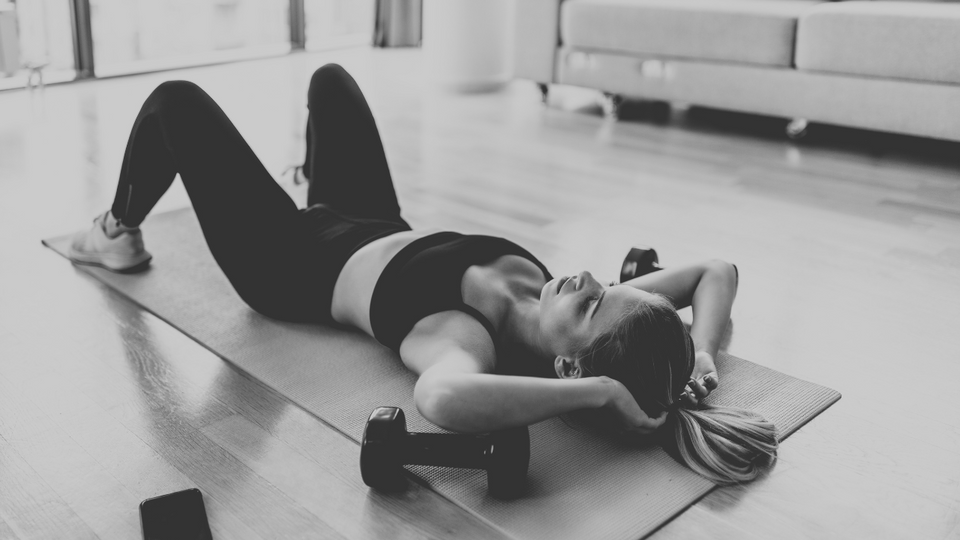The grind of focused fitness goals is no joke. You’re counting every macro, pushing through every workout, and staring down your reflection for progress updates. But what’s happening on the inside? Burnout doesn’t come from just physical exhaustion—it stems from mental fatigue, emotional depletion, and unrealistic expectations.
If you’re not supporting your mind with the same intensity you support your body, you’re setting yourself up to crash before you even reach your goals. This post is your deep dive into creating mental resilience, balance, and long-term sustainability in your physique-focused journey.
Why Burnout Happens in Physique Training
Let’s break down what makes aesthetic-based training mentally challenging:
1. Constant Restriction
Even in a reverse diet or building phase, there’s still a sense of control and structure. But during cutting phases or periods of intense focus? You're hyper-aware of every bite, every missed step, every gram of peanut butter. The hyper-focus can lead to food obsession, decision fatigue, and stress around eating.
2. Unrealistic Pressure
There’s often a nagging voice in your head saying: “Do better. Be leaner. Be perfect.” That voice can spiral into comparison and self-criticism—especially when social media serves up endless images of peak physiques.
3. Neglecting Rest
Sleep, downtime, and fun take a backseat. You're sacrificing social events, missing spontaneous moments, and often overtraining. That all adds up to physical AND mental fatigue.
The Cost of Burnout
When burnout hits, it doesn’t just feel like exhaustion—it can derail your entire mindset:
-
You stop enjoying the process.
-
You question why you started.
-
You lose your “why.”
And sometimes… it makes you want to quit altogether.
How to Prep Your Mind for the Demands of Your Goals
Step 1: Know Your “Why” (and Keep It Close)
Your “why” is your anchor. Are you doing this to prove something to yourself? To grow your confidence? To challenge your limits?
Write it down.
-
Stick it on your mirror.
-
Put it in your phone’s notes.
-
Re-read it on the hard days.
When you're deep in a tough phase and tempted to bail, your “why” reminds you this is your choice—and you're capable.
Step 2: Set Performance-Based Goals Too
Physique goals are great—but they’re not the only metric. Set non-scale goals like:
-
Hitting a new PR on barbell hip thrusts
-
Holding your routine longer without fatigue
-
Improving flexibility or endurance
These performance markers keep you motivated even when the scale stalls or the mirror plays tricks on you.
Step 3: Build Recovery into Your Plan
Mental recovery is just as important as physical. That includes:
-
Rest days without guilt
-
Mindful practices like journaling or deep breathing
-
Social time (yes, even while training hard)
Recovery isn’t lazy. It’s strategic.
Step 4: Journal the Process
Even if you’ve never journaled before, this is a game-changer. Start with:
-
One sentence per day: What felt good? What felt hard? What did I learn?
-
Log emotional triggers or recurring patterns
-
Track wins—no matter how small
Your journal becomes a map of your mindset. And it helps you course-correct before burnout hits.
Social Media: Blessing or Burnout Trigger?
Let’s be real—Instagram can be both. It can inspire… or spiral.
Try this filter:
-
Follow women who show the full process—not just highlight reels.
-
Mute or unfollow accounts that make you feel “less than.”
-
Post YOUR journey without apology. No, you don’t need abs 24/7 to be valid.
Handling the “Normal Life” Pressure
Training while working, studying, or raising a family? You’re juggling a lot. So when your friends or coworkers ask, “Can’t you just have one bite?”—it can feel isolating.
Set boundaries early:
-
“Thanks, but I’ve got a goal I’m really committed to.”
-
“I’m training right now, but I’d love to hang out another way.”
Don’t over-explain. You’re allowed to honor your discipline.
Warning Signs You Might Be Burning Out
If you notice any of these creeping in, hit pause and reassess:
-
You dread workouts that once lit you up
-
You feel constant guilt around food
-
You fantasize about quitting daily
-
You’re short-tempered, emotional, or isolating
These are not signs of weakness. They’re red flags to adjust your approach—not give up.
How Coaches (or a Support System) Can Help
Having a coach who understands your goals can be a total mental lifeline. A good coach doesn’t just give you macros—they listen, adapt, and support your mental health too.
But even if you’re self-coached:
-
Build a hype squad. A friend, a partner, a gym buddy—anyone who reminds you why you started.
-
Celebrate small wins with someone who understands what they mean.
Post-Goal Blues: The Silent Burnout
Let’s talk about what no one tells you: post-goal letdown is real.
You’ve been laser-focused for weeks or months. Then suddenly—no more deadlines, no more training phase, no clear direction.
Be ready with a plan:
-
Reverse diet slowly and mindfully
-
Set new goals (maybe performance-based or lifestyle-focused)
-
Be gentle with your self-image as your body rebounds
The post-goal period is when many athletes mentally spiral. Normalize this. Prepare for it. Support yourself through it.
Final Takeaways: It’s a Mind-Body Journey
Physique-focused training is about more than a body—it’s about discipline, mindset, and sustainable strength.
To avoid burnout:
-
Honor your emotions, not just your macros
-
Build in space to breathe and recover
-
Anchor yourself in purpose, not perfection
You can chase goals confidently, proudly, and clear-headed—without sacrificing your sanity.
Let your training build you, not break you.





